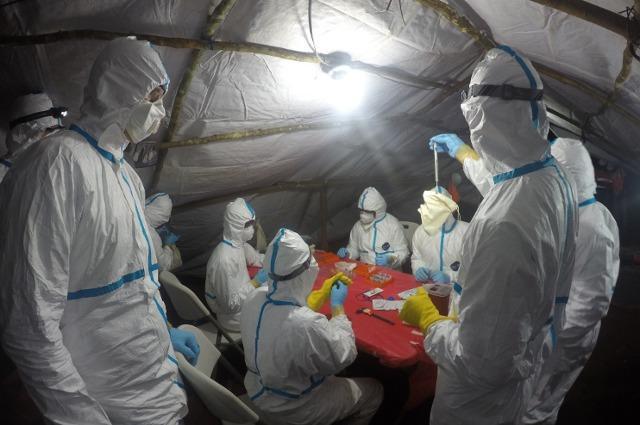-
About
- Departments & Offices
-
Academics
- Physician Assistant
- Special Master’s (MBS)
-
Admissions & Financial Aid
- Tuition & Fees
-
Student Life
-
- Student Resources by Program
- Academic & Student Support
- Wellness & Wellbeing
- Student Experience
- Events & Traditions
-
-
Research
- Research Labs & Centers
-
Local & Global Engagement
- Global Health Programs
- Community Engagement
Hunting Ebola’s Origins
Two Tufts alumni contributed to research providing a critical clue into the mysterious cause of the deadliest Ebola outbreak in history

The outbreak of Ebola that started in 2013 in West Africa, infecting nearly 30,000 people and killing 11,000 before it ended in 2016, has long left scientists puzzling over a key question: where did the virus originate?
Now a consortium of scientists has found the Zaire strain of Ebola—one of six known types of the virus—in a cave-dwelling West African bat species, shedding light on the outbreak’s possible origins.
The discovery was the result of research led by EcoHealth Alliance’s Jonathan Epstein, V02, MG02, and Jim Desmond, V08, VG08, as part of the USAID-funded PREDICT project. During the 2013-16 eruption of Ebola, Zaire ebolavirus infected people in Liberia and the neighboring countries of Sierra Leone and Guinea, and the surprise epidemic snowballed to become the deadliest in history.
Tufts Now talked with Desmond, who trained and oversaw the bat-testing team on the ground in Liberia, about how they finally found Zaire ebolavirus in an animal, and why such research is necessary to preventing future pandemics.